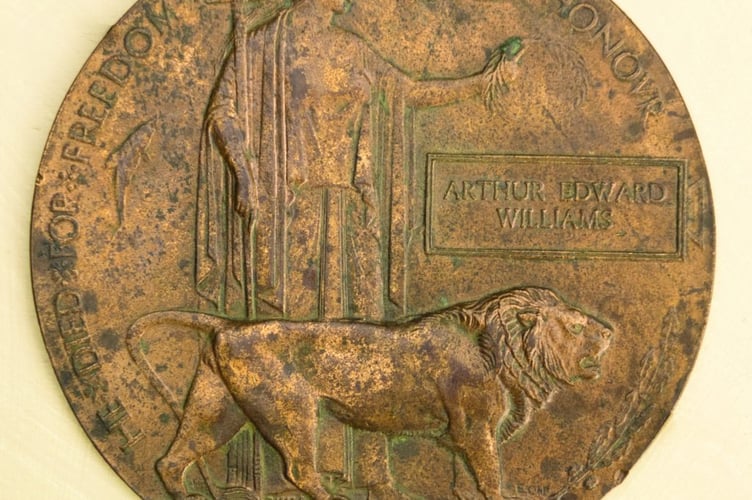A KEEN gardener who dug up a memorial to a First World War casualty is keen to pass on his find to one of the soldier’s descendants.
Alan Hall found the bronze plaque while working on a flower bed in his garden at Mayford.
It commemorates the death of Arthur Edward Williams, a private in the 2nd Battalion of The Queen’s (Royal West Surrey Regiment) who was killed in action on 25 September 1915.
“The plaque was about 18 inches down in the soil and was a real surprise when I unearthed it,” said Alan, who has lived in Chiltern Close for five years.
“I cleaned it up to find it was one of the plaques that were made in honour of soldiers who died in the First World War. I’ve no idea how it ended up in the ground in my garden.
He believes the land on which the houses in the close were built was previously woodland or part of a horticultural nursery.
Arthur Williams was born in Camberwell, a historic part of the county of Surrey that had become part of London. At the outbreak of war, he lived in nearby Walworth and enlisted at Southwark, joining Field Marshal Kitchener’s volunteer “New Army”.

Private Williams, service number G/4650, died on the first day of the Battle of Loos in northern France, the biggest British attack of 1915. He was one of 50,000 allied casualties recorded between 25 September and 8 October, leaving behind a widow and two sons.
He has no known grave and his age is not recorded in military records. As he has no gravestone, his name is one of 20,639 engraved on the Loos Memorial in the Pas de Calais, France.
The plaque discovered by Alan was one of many thousands individually cast to commemorate those who gave their lives in the war and acknowledge their sacrifice. They were presented to the next of kin and intended to give the close family a tangible memory of their lost loved one.
The design on the 4½-inch diameter disc features the figure of Britannia holding a laurel wreath above a box containing the name of the service man or woman who was killed.
Online research has found that Arthur’s wife was Hetty Maria Louise Williams, who was 28 or 29 when he was killed. They had married in 1912 and had two sons, George in 1912 and Sidney in 1913.
It is possible his immediate family, or a relative who inherited the plaque, might have moved to the Woking area after the war.
“I’d really like to find one or more of Arthur’s descendants so that I can give them the plaque,” said Alan. “It would be good to return the memorial to his family.”
If you are one of Arthur Williams’s descendants, or know someone who could be related to him, contact the News & Mail and we will put you in touch with Alan. Call 01483 375793 or email [email protected].




